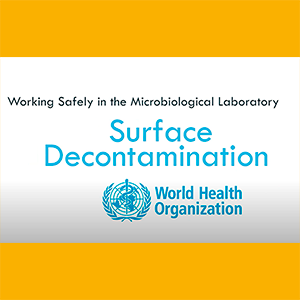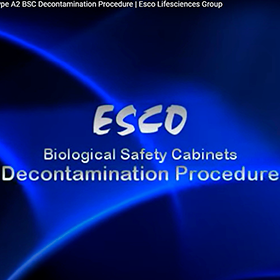Decontamination

Decontamination is a process that removes or reduces biological agents to a safe level with respect to disease transmission or other adverse effects and makes an object safe for handling.
To find out the most effective disinfection and sterilisation methods for a particular organism its Pathogen Safety Data Sheets should be consulted.
The cleaning of an object is a physico-chemical procedure aimed at removing all extraneous material from it. It has different phases: wetting, soaping, friction, rinsing and drying. The characteristics of the detergent and the water are especially important. The detergent is chosen in accordance with the dirt that needs to be removed, the type of material and the type of cleaning to be carried out.
Disinfection destroys the infectious agents in the objects but does not necessarily destroy all the spores. The presence of organic matter in the material disrupts the disinfection process, since organic matter protects microorganisms from the process and could cause it to fail.
There are many brands of disinfectant products but, in general, they are based on halogens, acids, alkalis, heavy metal salts, quaternary ammonium compounds, phenols, aldehydes, ketones, alcohols, amines and mixtures of these. None of them are equally effective in all conditions for all infectious agents. One example of a wide-spectrum disinfectant is Virkon, another being household bleach, which is widely used.
Sterilization consists of completely eliminating all microorganisms, including spore-forming ones, or making them inviable, through physical (heat or radiation) or chemical methods. Sterility is an absolute concept, since a sterile material cannot be contaminated by any form of viable microorganism.

